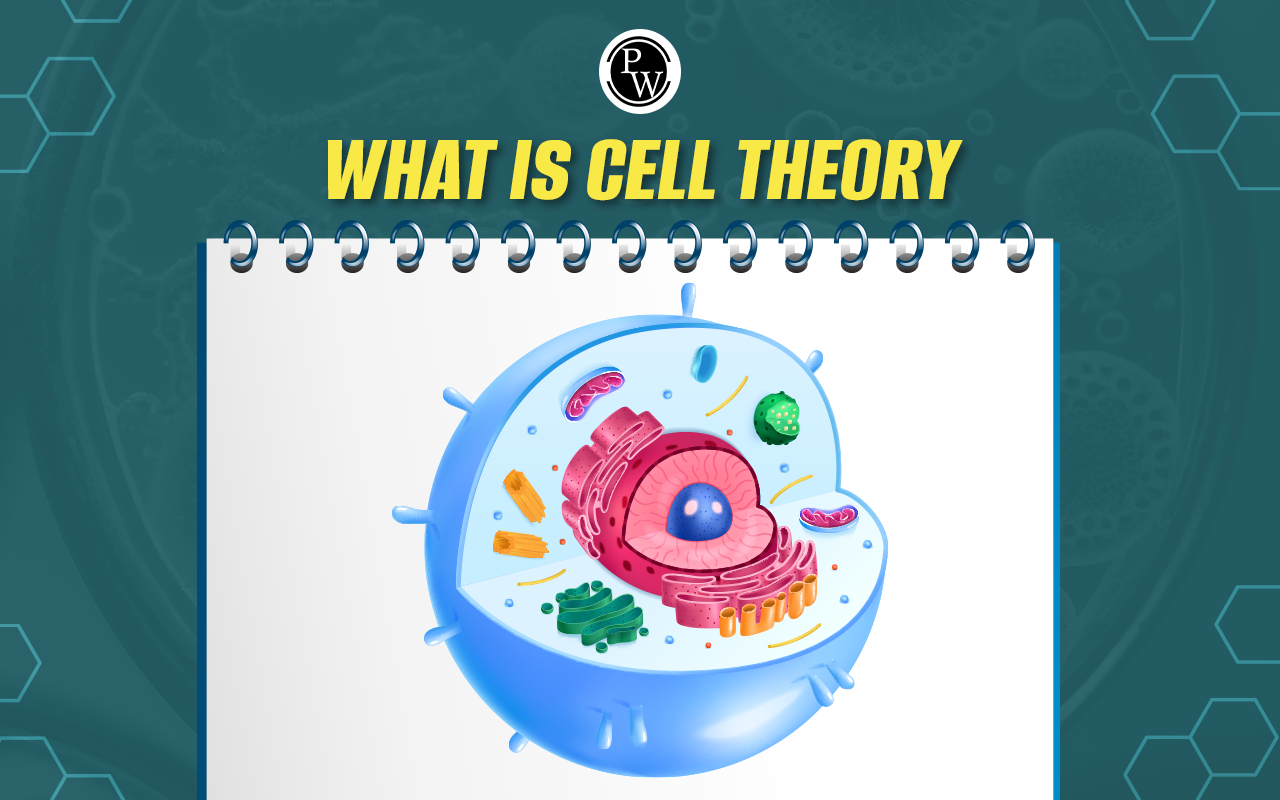
Anabaena: Anabaena is a blue-green algae distinguished from green algae by a number of key characteristics. Unlike green algae, Anabaena cells do not have a distinct nucleus, and the pigment is distributed throughout the cell. Anabaena contains both green chlorophyll and blue pigment. Anabaena appears morphologically as a filament that resembles a string of beads, with larger, empty cells in between. Nostoc also produces bead-like filaments, but they are encased in a gelatinous mass. NEET Biology Notes on Anabaena are provided in the article below.
Anabaena Meaning
Anabaena is a genus of filamentous cyanobacteria that form plankton. Anabaena, known for its ability to fix nitrogen, forms symbiotic relationships with plants like the mosquito fern. It is one of four genera of cyanobacteria that produce neurotoxins that are toxic to local wildlife, livestock, and pets. These neurotoxins are thought to play a role in the plant's defense mechanisms during these symbiotic relationships, protecting it from grazing pressure. Anabaena species have been effectively utilized as natural fertilizers in rice paddy fields, demonstrating consistent reliability. Additionally, Anabaena is an important model organism for studying gene differentiation during heterocyst formation. Anabaena, a nitrogen-fixing blue-green algae genus, features bead-like or barrel-shaped cells and contains extended spores known as heterocysts. It commonly inhabits shallow waters and damp soils, such as plankton.Anabaena Classification
The taxonomic classification of Anabaena is as follows:| Anabaena Classification | |
|---|---|
| Category | Classification |
| Domain | Bacteria |
| Phylum | Cyanobacteria |
| Class | Cyanophyceae |
| Order | Nostocales |
| Family | Nostocaceae |
| Genus | Anabaena |
Anabaena Structure
Anabaena is a genus of filamentous cyanobacteria, commonly referred to as blue-green algae. Renowned for their nitrogen-fixing capabilities, these organisms engage in symbiotic relationships with certain plants. Anabaena's structural composition is distinctive:- Filaments (Trichomes): Anabaena exhibits a filamentous architecture, consisting of chains of cells known as trichomes. These chains resemble strings of beads, with each "bead" being a cylindrical, photosynthetic cell. The trichomes can be either straight or slightly curved.
- Vegetative Cells: Predominantly, the cells within a trichome are vegetative cells. These cells perform photosynthesis, harnessing sunlight, water, and carbon dioxide to generate energy and produce glucose for the organism. Additionally, they contain gas vesicles that facilitate Anabaena's buoyancy in water.
- Heterocysts: Interspersed along the trichomes are specialized cells called heterocysts. These cells are larger and possess thicker walls compared to vegetative cells. Heterocysts are the sites of nitrogen fixation, a process that transforms atmospheric nitrogen (N2) into ammonia (NH3), which the organism can utilize. To protect the nitrogenase enzyme, which is responsible for nitrogen fixation, from inactivation by oxygen (O2), heterocysts develop a thick cell wall and limit the oxygen permeability.
Structural Organisation in Animals
Anabaena Characteristics
Anabaena is a genus of filamentous cyanobacteria, commonly referred to as blue-green algae, which inhabit planktonic environments. The following are some notable characteristics of Anabaena:- Filamentous Structure: Anabaena forms elongated, chain-like structures known as trichomes. These trichomes consist of a series of bead-like cells arranged in a linear fashion.
- Nitrogen Fixation: Anabaena possesses the unique ability to fix atmospheric nitrogen. This process involves converting nitrogen gas (N₂) from the atmosphere into ammonia, a form that plants and other organisms can readily utilize.
- Heterocysts: Within the trichomes, Anabaena develops specialized cells called heterocysts, which are crucial for nitrogen fixation. Heterocysts are distinguished by their larger size and paler appearance compared to other cells. These cells maintain an anaerobic environment necessary for the nitrogen fixation process.
- Photosynthesis: Anabaena is capable of photosynthesis, allowing it to produce its own food by harnessing sunlight.
- Symbiotic Relationships: Anabaena can engage in symbiotic relationships with certain plants, such as the mosquito fern. In these mutualistic interactions, Anabaena supplies the plant with fixed nitrogen, while the plant provides a sheltered habitat for Anabaena.
- Toxin Production: Some Anabaena species can produce toxins detrimental to animals and humans. These toxins may cause a range of health issues, including liver damage, respiratory distress, and skin irritation.
- Freshwater Habitat: Anabaena is prevalent in various freshwater environments, including ponds, lakes, and rivers, and can also be found in moist soil.
- Blooms: Under conditions of nutrient enrichment, Anabaena can proliferate rapidly, leading to blooms. These blooms may discolor the water and create conditions that are inhospitable for other aquatic organisms.
Anabaena Functions
Anabaena is a genus of filamentous cyanobacteria, also known as blue-green algae. They are free-living organisms that can be found in freshwater, saltwater, and even damp soil. Anabaena is important for a number of reasons, but its two main functions are:- Heterocysts: Specialized cells with thick walls that create an oxygen-free environment.
- Nitrogenase Enzyme: Breaks the triple bond in atmospheric nitrogen (N₂) to convert it into ammonia (NH₃), which is a usable form of nitrogen. The enzyme is highly sensitive to oxygen, necessitating the oxygen-free environment.
- Usage: Ammonia produced is incorporated into amino acids and other nitrogenous molecules by Anabaena and other organisms.
2. Photosynthesis:
- Vegetative Cells: Non-specialized cells that contain chlorophyll pigments.
- Process: Uses sunlight, water (H₂O), and carbon dioxide (CO₂) in the Calvin cycle to produce carbohydrates (sugars) for energy and growth.
- Byproduct: Releases oxygen gas (O₂) into the environment.
| Important NEET Biology Notes | ||
|---|---|---|
| Selaginella | Embryo | Malvaceae |
| Pinus | Polyembryony | Volvox |
3. Ecological Role:
- Nitrogen Cycle: Anabaena's nitrogen fixation replenishes usable nitrogen in aquatic ecosystems.
- Symbiosis: Forms mutualistic relationships with plants like the Azolla fern, providing fixed nitrogen in exchange for a protected environment.
- Toxin Production: Some species can produce toxins under specific conditions, but the focus here is on their beneficial ecological roles.
Anabaena Prokaryotic or Eukaryotic
Anabaena is a prokaryotic organism. Prokaryotic cells are simpler than eukaryotic cells and do not have some of the complex structures that eukaryotic cells possess. A major difference is that prokaryotic cells lack a nucleus. Below are some characteristics of prokaryotic cells, which also apply to Anabaena:- They can be single-celled or form colonies.
- They do not have a nucleus; their DNA is free-floating in the cytoplasm.
- They lack membrane-bound organelles.
- Their cell wall is simple and made of peptidoglycan.
| Important NEET Biology Notes | ||
|---|---|---|
| Chara | Funaria | Apomixis |
| Rhizopus | Spirogyra | Bacteriophage |
Anabaena Examples
Anabaena is a genus of filamentous cyanobacteria known for its nitrogen-fixing capabilities and symbiotic relationships with various plants. Below are some examples of Anabaena species and their characteristics:1. Anabaena azollae
Symbiotic Relationship: This species forms a symbiotic relationship with the aquatic fern Azolla. Anabaena azollae lives in the cavities of Azolla leaves, which converts atmospheric nitrogen into a form the plant can use. This symbiosis is particularly important in rice paddies, where Azolla and Anabaena azollae are used as green manure to improve soil fertility.2. Anabaena variabilis
Nitrogen Fixation: Anabaena variabilis can fix atmospheric nitrogen into ammonia through specialized cells called heterocysts, which provide an anaerobic environment necessary for the nitrogenase enzyme to function.3. Anabaena flos-aquae
Bloom Formation: Anabaena flos-aquae is known for forming harmful algal blooms in freshwater environments. These blooms can produce toxins such as anatoxin-a, which are harmful to aquatic life and human health.4. Anabaena cylindrical:
Morphology: This species is characterized by its cylindrical cells and its ability to form long chains or filaments. It also forms heterocysts for nitrogen fixation.5. Anabaena sphaerica :
Structure: Anabaena sphaerica is noted for its spherical cells, which form chains or colonies. It also forms heterocysts for nitrogen fixation.Anabaena Reproduction
Unlike many plants and animals, Anabaena, a type of filamentous cyanobacteria or blue-green algae, does not engage in sexual reproduction. Instead, it solely relies on asexual methods to reproduce. Here's a closer look at its two main asexual reproduction strategies:1. Fragmentation:
This is the most common way Anabaena reproduces asexually. The filamentous chain of cells, called a trichome, can break apart either spontaneously or due to environmental factors. Each fragment that contains enough viable cells can grow into a new, independent Anabaena filament.2. Akinete Formation:
When environmental conditions become unfavorable, like when nutrients are scarce or during dry periods, certain vegetative cells of Anabaena can change into akinetes. Akinetes are dormant cells with thick walls that are metabolically inactive and highly resistant to tough conditions. When conditions improve, akinetes can sprout and develop into new trichomes.3. Heterocysts:
These are specialized cells found within the Anabaena trichome that perform nitrogen fixation. Nitrogen fixation is the process of converting atmospheric nitrogen (N2) into a usable form such as ammonia, which is essential for biomolecules. Heterocysts create a low-oxygen environment needed for the enzyme nitrogenase, responsible for nitrogen fixation, to work effectively. Although Anabaena mainly reproduces asexually, there have been reports of horizontal gene transfer events where genetic material is exchanged between different Anabaena strains. Overall, through asexual reproduction strategies like fragmentation and akinete formation, Anabaena can effectively spread to new environments and endure challenging conditions. Anabaena lacks sexual reproduction . While there are indications of genetic exchange mechanisms in some studies, they are not considered true sexual reproduction. Physics Wallah offers NEET UG Exam online coaching with various courses, live classes, doubt sessions, and study materials. PW is known for affordability, experienced faculty, and multiple language options. Enroll now for effective NEET preparation.| NEET Exam Important Links | |
|---|---|
| NEET Biology Syllabus | NEET Biology Diagrams |
| NEET Biology MCQ | NEET Biology Chapter wise Weightage |
| NEET Biology Notes | NEET Previous Year Question papers |
Anabaena FAQs
Q 1. Is Anabaena a bacterium or algae?
Ans. Anabaena is a genus of nitrogen-fixing blue-green algae that grows as plankton in shallow water and on moist soil. Its cells resemble beads or barrels and are interspersed with larger spores called heterocysts.
Q 2. What is the function of Anabaena?
Ans. Anabaena is a genus of filamentous cyanobacteria that exists as plankton. It is known for its nitrogen-fixing abilities and forms symbiotic relationships with certain plants, such as the mosquito fern.
Q 3. Is Anabaena blue-green?
Ans. Yes, Anabaena and Microcystis are types of cyanobacteria, commonly known as blue-green algae. They naturally grow in many water bodies and, under certain conditions like warm weather and abundant nutrients, can undergo rapid growth, forming dense, floating mats of algae.
Q 4. What are Anabaena and Nostoc?
Ans. Members of the genera Anabaena and Nostoc are significant cyanobacteria found in both terrestrial and aquatic environments. These organisms can exist as free-living forms or as symbiotic partners (cyanobionts) with other organisms.
Q 5. Is Anabaena asexual?
Ans. Yes, Anabaena reproduces asexually. It can grow in all types of water, often forming "blooms" in nutrient-rich waters. These blooms can discolor the water and produce a bad odor when the cells die and decay. Anabaena reproduces asexually by cell division or by fragmentation of the filaments.
🔥 Trending Blogs
Talk to a counsellorHave doubts? Our support team will be happy to assist you!

Check out these Related Articles
Free Learning Resources
PW Books
Notes (Class 10-12)
PW Study Materials
Notes (Class 6-9)
Ncert Solutions
Govt Exams
Class 6th to 12th Online Courses
Govt Job Exams Courses
UPSC Coaching
Defence Exam Coaching
Gate Exam Coaching
Other Exams
Know about Physics Wallah
Physics Wallah is an Indian edtech platform that provides accessible & comprehensive learning experiences to students from Class 6th to postgraduate level. We also provide extensive NCERT solutions, sample paper, NEET, JEE Mains, BITSAT previous year papers & more such resources to students. Physics Wallah also caters to over 3.5 million registered students and over 78 lakh+ Youtube subscribers with 4.8 rating on its app.
We Stand Out because
We provide students with intensive courses with India’s qualified & experienced faculties & mentors. PW strives to make the learning experience comprehensive and accessible for students of all sections of society. We believe in empowering every single student who couldn't dream of a good career in engineering and medical field earlier.
Our Key Focus Areas
Physics Wallah's main focus is to make the learning experience as economical as possible for all students. With our affordable courses like Lakshya, Udaan and Arjuna and many others, we have been able to provide a platform for lakhs of aspirants. From providing Chemistry, Maths, Physics formula to giving e-books of eminent authors like RD Sharma, RS Aggarwal and Lakhmir Singh, PW focuses on every single student's need for preparation.
What Makes Us Different
Physics Wallah strives to develop a comprehensive pedagogical structure for students, where they get a state-of-the-art learning experience with study material and resources. Apart from catering students preparing for JEE Mains and NEET, PW also provides study material for each state board like Uttar Pradesh, Bihar, and others
Copyright © 2025 Physicswallah Limited All rights reserved.
Get App









